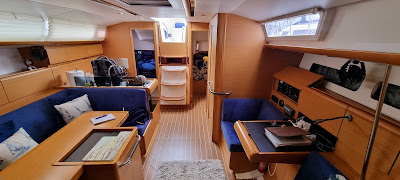Introduction:
Choosing the perfect yacht involves various considerations, and one crucial decision is whether to opt for a mono hull or a twin hull design. Both designs have their distinct advantages and disadvantages, catering to different preferences and requirements. In this blog post, we will explore the pros and cons of buying a mono hull or twin hull yacht, helping you make an informed decision.
Mono Hull Yacht: A mono hull, as the name suggests, features a single hull design. Here are the pros and cons of buying a mono hull yacht:Pros: 1. Stability in rough seas: Mono hull yachts are known for their exceptional stability in rough waters. The deep keel and narrow shape of the hull enable better maneuverability and increased resistance to rolling, making them suitable for offshore cruising. 2. Enhanced sailing performance: Mono hulls are designed for sailing enthusiasts who appreciate the thrill of cutting through the water. They offer better upwind performance, allowing for increased sailing speeds and improved responsiveness. 3. Sleek and traditional aesthetics: Many yacht enthusiasts are drawn to the timeless elegance and classic design of mono hull yachts. Their sleek lines and graceful profiles exude sophistication and charm. Cons: 1. Limited interior space: Mono hulls typically have less interior space compared to their twin hull counterparts. The narrow beam restricts cabin size and may result in reduced living areas and storage capacity. 2. Reduced stability at rest: While mono hulls excel in rough seas, they can be less stable at anchor or during slow-speed maneuvers. This can lead to more rolling and discomfort for those on board. 3. Shallow draft limitations: Mono hulls usually have a deeper draft, making them less suitable for cruising in shallow waters or exploring coastal areas with shallow depths. Twin Hull (Catamaran) Yacht: A twin hull, also known as a catamaran, features two parallel hulls connected by a bridge deck. Let's explore the pros and cons of buying a twin hull yacht:Pros: 1. Spaciousness and comfort: Twin hull yachts offer significantly more interior and deck space compared to mono hulls. The wider beam allows for expansive living areas, larger cabins, and ample storage, making them ideal for long-term cruising or entertaining guests. 2. Stability at rest: Catamarans provide excellent stability at anchor or during slow speeds, thanks to their wide beam and two hulls. This feature ensures reduced rolling and increased comfort, especially for those prone to seasickness. 3. Shallow draft advantage: Catamarans typically have a shallower draft than mono hulls, enabling access to more secluded anchorages, remote coves, and shallow coastal areas. Cons: 1. Reduced upwind performance: Catamarans generally have less upwind performance compared to mono hulls. Their wider beam can result in increased wind resistance, making sailing upwind less efficient and potentially requiring more tacking. 2. Limited maneuverability: Due to their wider beam and twin hull design, catamarans may be less maneuverable in tight spaces or crowded marinas. Extra caution and skill may be required during docking or mooring. 3. Higher initial costs: Twin hull yachts tend to have higher initial purchase costs compared to mono hulls of similar size and specifications. Maintenance and docking fees may also be higher due to the larger footprint. Conclusion: Deciding between a mono hull or twin hull yacht depends on your specific needs, preferences, and sailing aspirations. Mono hulls offer exceptional stability, sleek aesthetics, and enhanced sailing performance, while twin hulls provide spaciousness, stability at rest, and shallow draft advantages. Consider the trade-offs and prioritize your requirements to choose the yacht that aligns best with your boating lifestyle.



















